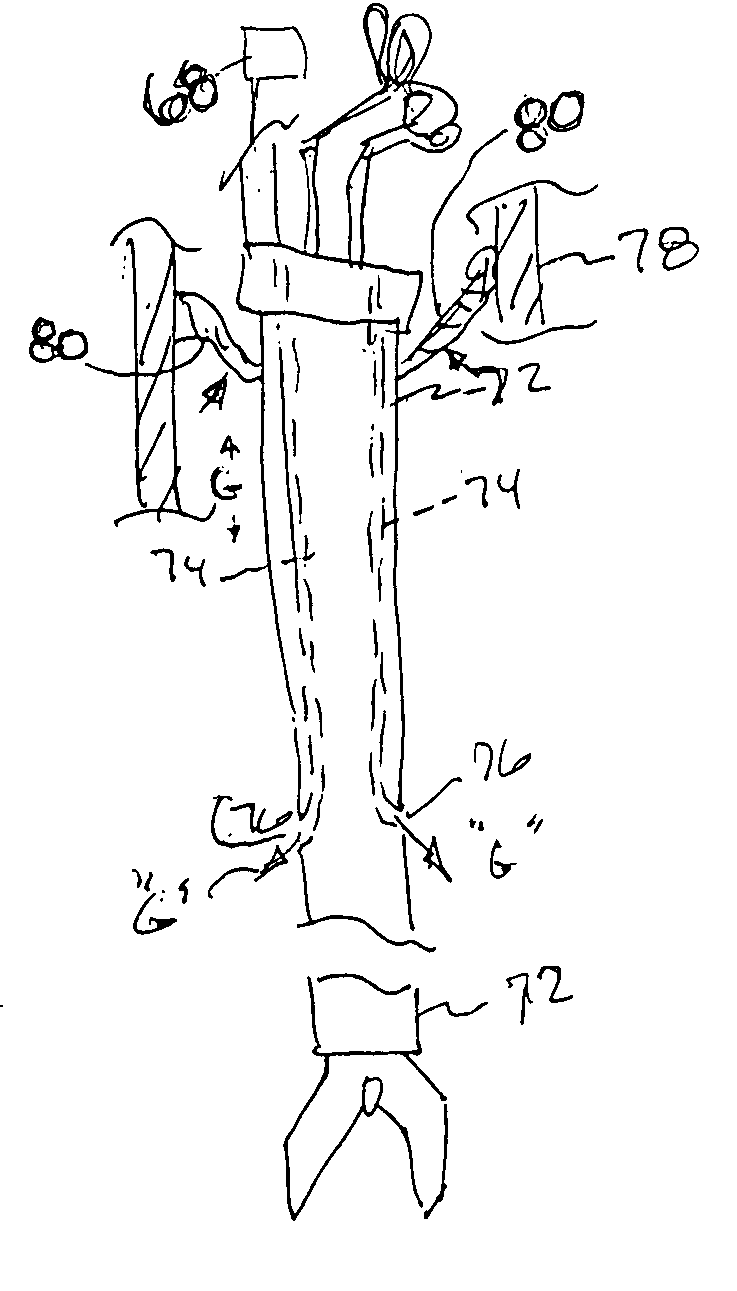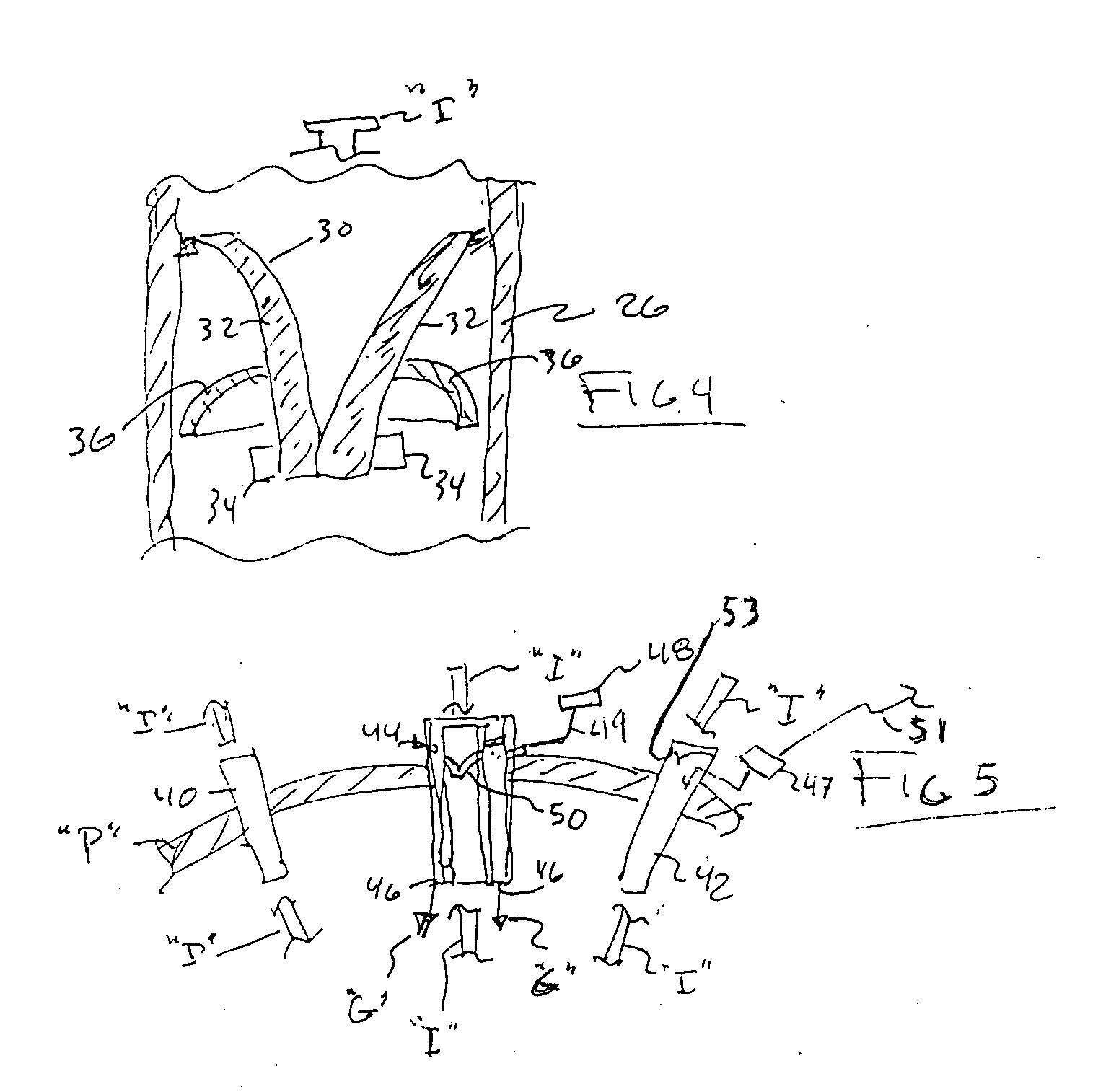[0011] In a first aspect of the present invention, by positioning a
partial obstruction in the outflow path of gas from the pneumoseal of the present invention, the volume of lost gas is reduced by the
back pressure. The
partial obstruction could be placed anywhere in the cannula, as long as it is proximal to the inflow of gas for the pnuemoseal and the operative pneumoperitoneum. In addition, the active
high pressure and high volume of distending gas could be used to increase or decrease the size of the partial obstruction. The partial obstruction of the outflow of gas could be a design feature of only one large bore cannula, several large bore cannulas, or all of the cannulas used in a surgical procedure. Once again, the
advantage of a partial obstruction would be to increase the efficiency of a multiple cannula
system by decreasing the loss of
distension gas from the pneumoseal and the operative pneumoperitoneum. Such partial obstruction of a current dual
mechanical valve cannula of the prior art would be surgically inappropriate because it would not be airtight.
[0012] In a closed pressurized
system such as an operative pneumoperitoneum,
gas pressure can be measured at any
anatomic location. In an open pressurized
system, like the pneumoseal system, the pressure maintaining the operative pneumoperitoneum can only be measured within the pneumoperitoneum. This is because in an open pressurized system, the pressure in the inflow, outflow or combined gas streams is only representative of the static
peritoneum pressure when measured at some point beyond the distal end of the cannula and within the
peritoneum. Outflow of gas through the cannula can be reduced by using a partial obstruction as recited hereinabove. If the outflow of gas were not interrupted by the inflow of gas, the outflow of gas would only be constrained by the flow characteristics of the open cannula and a large flow volume would occur. If the outflowing gas encounters a shaped inflow of
high pressure gas within the cannula body, the outflow gas flow characteristics are changed dramatically and the volume of outflowing gas is greatly reduced. This principle is the basis of the pneumoseal cannula. In addition, there would be upward flow gas through the cannula. This upward flow could be used to increase the efficiency of a partial obstruction, increasing the
overall efficiency of the “no seal” cannula of the present invention, even when utilizing other components of a multiple cannula system with the patient.
[0013] The present invention, in one aspect increases the efficiency of the pneumoseal cannula by introducing a partial obstruction within the cannula proximal to the air input orifice. Such a cannula of the present invention may be effectively utilized with a plurality of cannulas that are non-obstructed, partially obstructed, or fully obstructed to increase the efficiency of the pneumoseal system of cannulas, which may be measured by the maintenance of an adequately stable operative pneumoperitoneum. A partial obstruction may be made by using an active gas inflow to urge the walls of the partial obstruction to decrease the outflow of gas, by compression on those walls even to the point of creating a total obstruction. Total obstruction created by a series of fins to baffle the air flow and harness lateral closure forces upon the walls of that valve.
[0015] The invention thus comprises a cannula
assembly for the maintenance of an operative pneumoperitoneum in a patient comprising an elongated cannula having a proximal end and a distal end. A valve is preferably securely arranged within, on or adjacent the proximal end of the cannula to provide a tight seal and minimize the escape of gas which has been introduced into the patient's pneumoperitoneum when an
operative instrument is passed therethrough. The valve may comprise an inner portion of a proximal cap which is fixed or removably attachable to the proximal end of the cannula. The valve
assembly may have a compressible O-ring thereon to provide a further seal of the cap to the cannula. The valve may have a plurality of fluid flow directing fins thereon to direct any
backflow of gas to tighten the sealing effect of the valve. The valve may have a distal underside with a pocket arrangement thereon to capture any backflowing gas and create a more efficient seal by the valve in the cannula.
 Login to View More
Login to View More  Login to View More
Login to View More 


